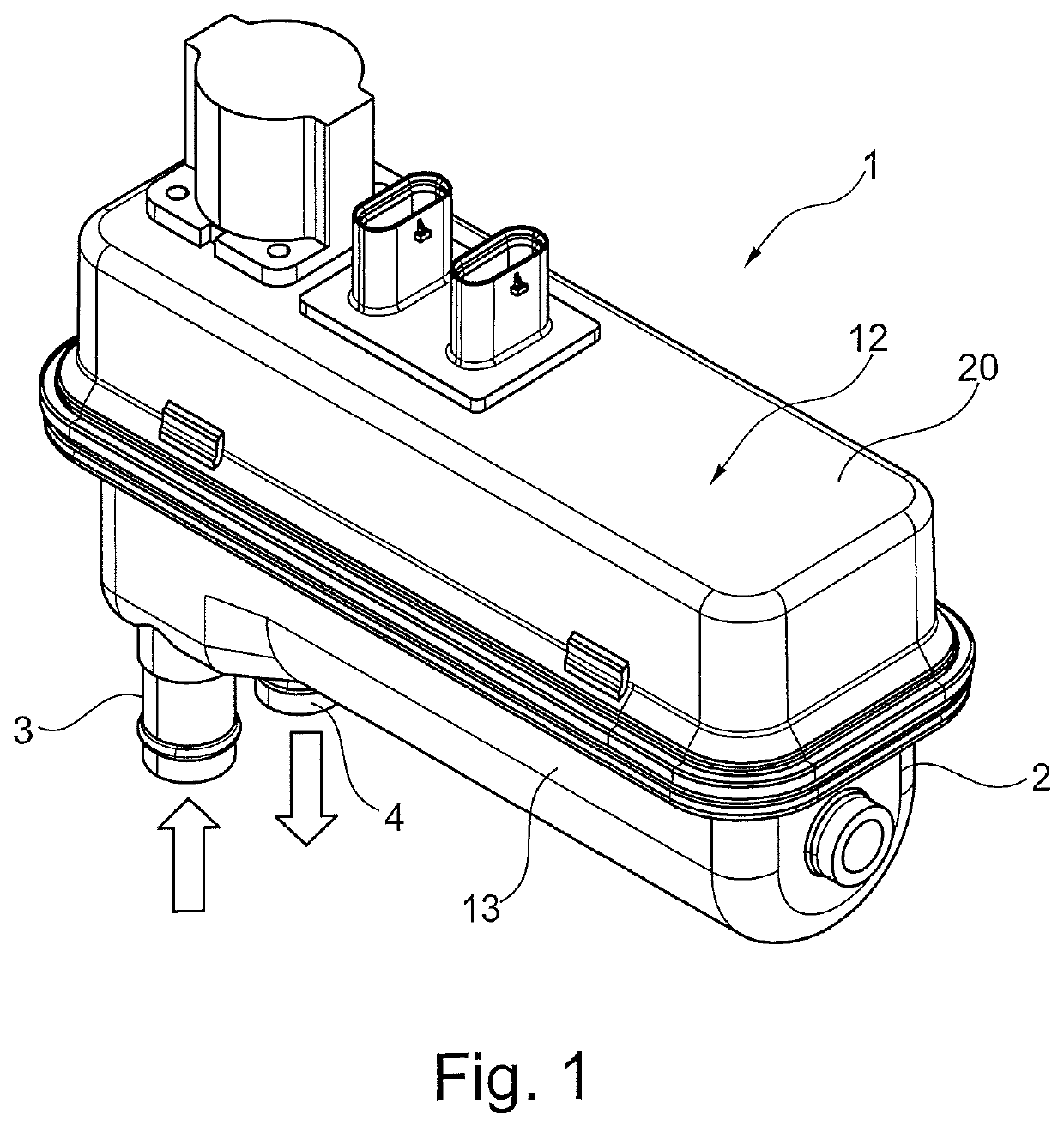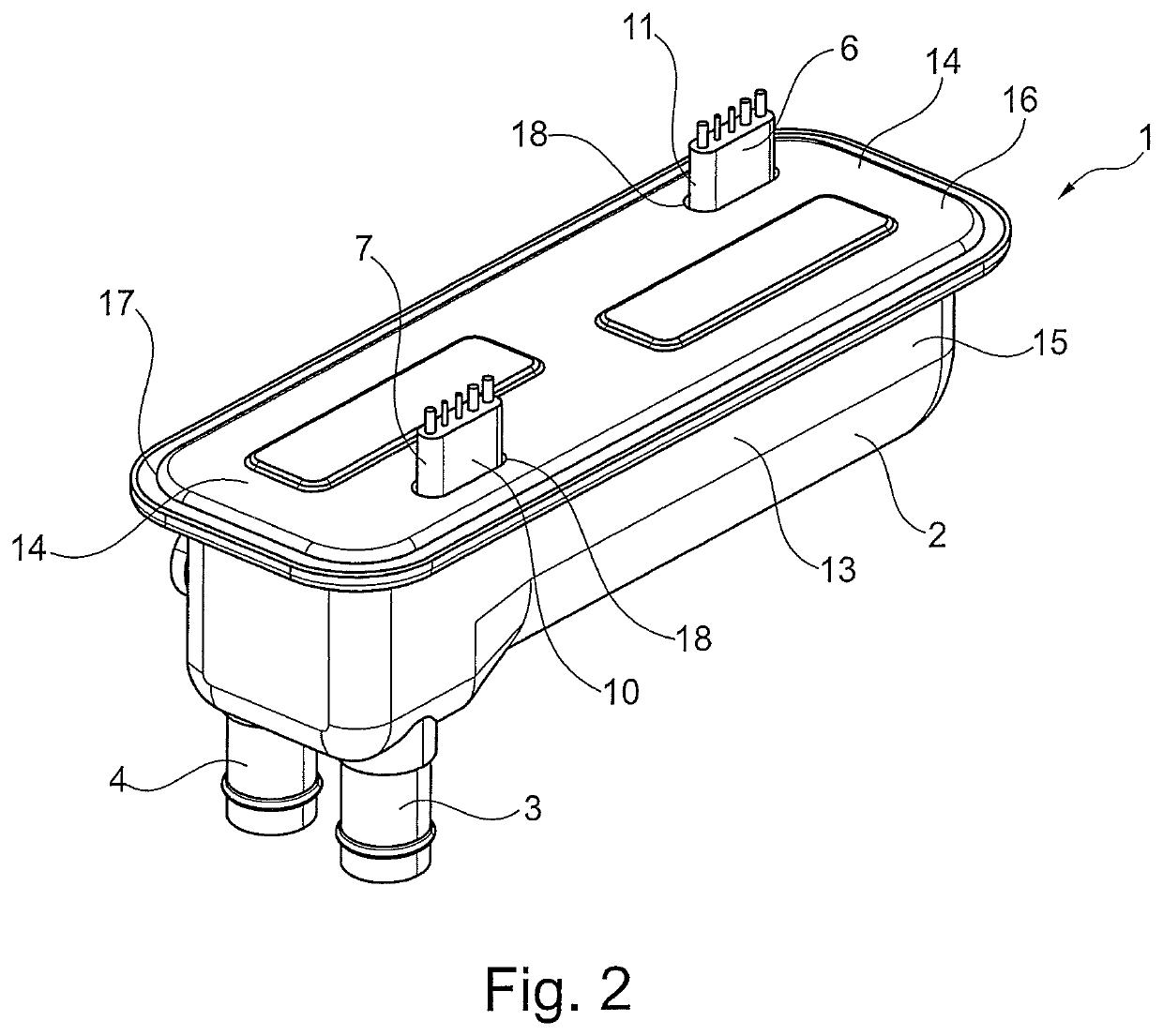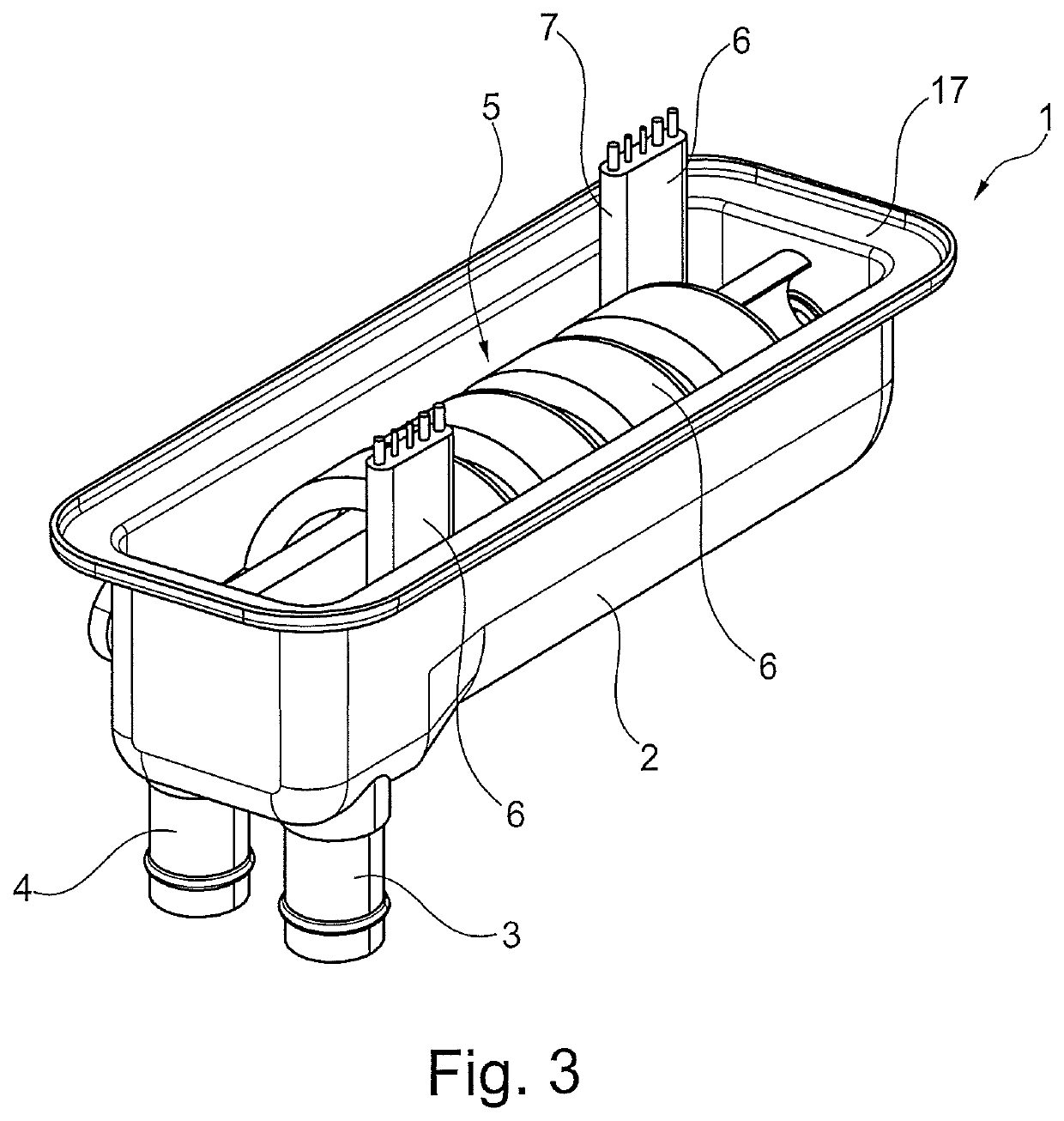Electrical heating device
a heating device and electric heating technology, applied in the direction of heating element shapes, vehicle components, immersion heating arrangements, etc., can solve the problems of complex safety, electrical heating system or auxiliary heating system value even greater, and integration of high-voltage components in the interior, so as to achieve easy production and economic
- Summary
- Abstract
- Description
- Claims
- Application Information
AI Technical Summary
Benefits of technology
Problems solved by technology
Method used
Image
Examples
first embodiment
[0066]FIGS. 1 to 8 show an electrical heating device 1.
[0067]The heating device 1 has a housing 2 that is formed with a fluid inlet 3 for the intake of a fluid to be heated into the housing 2 and with a fluid outlet 4 for the discharge of the fluid to be heated from the housing 2.
[0068]A flow channel 5 is formed between the fluid inlet 3 and the fluid outlet 4. The fluid to be heated flows through this channel in order to be heated.
[0069]At least one heating instrument 6 extends into the housing 2 and into the flow channel 5 in the housing 2. Advantageously, a heating instrument 6 can be provided or also multiple heating instruments 6 can be provided.
[0070]Each heating instrument 6 has a sleeve 7 that is preferably made from metal. Alternatively, however, the sleeve 7 could also be made from plastic or a similar material. The sleeve 7 of the heating instrument 6 surrounds an interior of the heating instrument 6 in a fluid-tight way, wherein there is at least one heating element 8 in...
PUM
 Login to View More
Login to View More Abstract
Description
Claims
Application Information
 Login to View More
Login to View More - R&D
- Intellectual Property
- Life Sciences
- Materials
- Tech Scout
- Unparalleled Data Quality
- Higher Quality Content
- 60% Fewer Hallucinations
Browse by: Latest US Patents, China's latest patents, Technical Efficacy Thesaurus, Application Domain, Technology Topic, Popular Technical Reports.
© 2025 PatSnap. All rights reserved.Legal|Privacy policy|Modern Slavery Act Transparency Statement|Sitemap|About US| Contact US: help@patsnap.com



